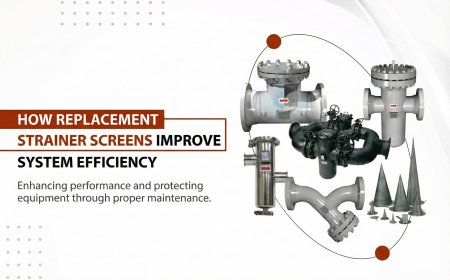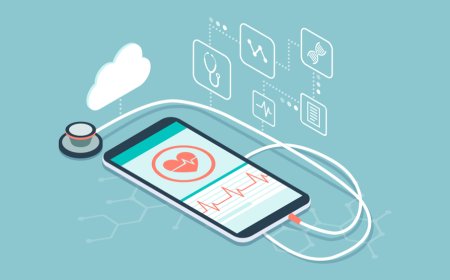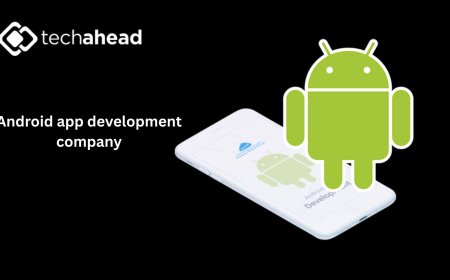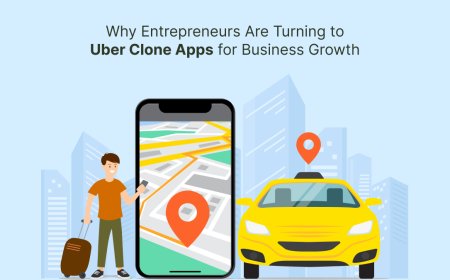How Healthcare Software Development Is Revolutionizing Patient Care?
Learn how healthcare software development is revolutionizing patient care with innovative tools, improved workflows, and better patient outcomes.
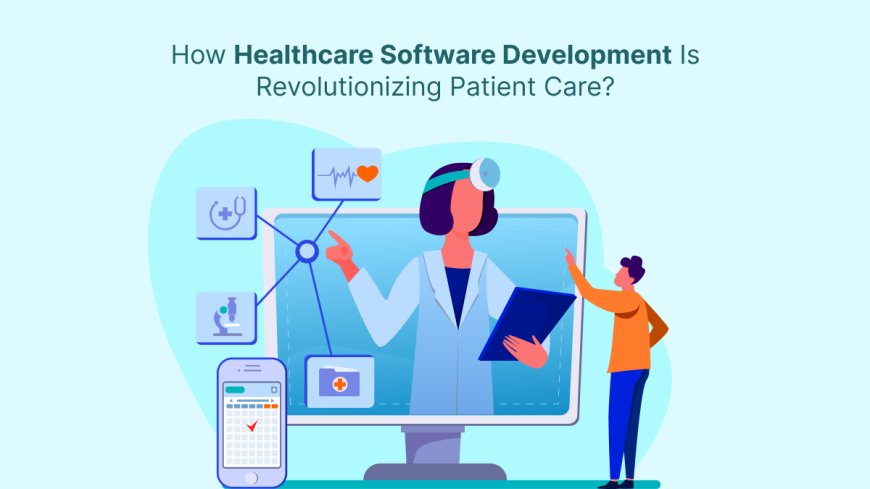
Healthcare has entered a new digital era where technology is not just supporting patient careits transforming it entirely. Gone are the days when records were paper-based, appointments took weeks, and diagnoses were slow. Today, with healthcare software development leading the way, both patients and providers enjoy faster, smarter, and more personalized care. From mobile health apps to AI-based diagnostics, healthcare software is becoming the backbone of modern medical services.
This revolution isnt only about convenience. Its about saving lives, preventing diseases before they become serious, and empowering people to take charge of their health. In this blog, well explore how healthcare software development is reshaping patient care, the core technologies behind it, and why it's becoming a vital part of the healthcare ecosystem.
What Is Healthcare Software Development?
Understanding the Concept
Healthcare software development involves creating digital tools and platforms that help manage, deliver, and improve healthcare services. These tools are designed for different usersdoctors, nurses, patients, administrators, and even insurance providers. The aim is to streamline processes, improve accuracy, enhance communication, and ultimately offer better care outcomes.
Examples of Healthcare Software
- Electronic Health Records (EHRs): Store and manage patient information digitally.
- Telemedicine Apps: Allow patients to consult with doctors remotely.
- Mobile Health Apps: Help users monitor fitness, diet, and chronic conditions.
- Medical Imaging Software: Supports diagnosis using digital scans.
- Healthcare CRM Systems: Manage patient relationships and communication.
- Remote Patient Monitoring Tools: Collect health data from wearables and IoT devices.
The Shift from Traditional to Digital Healthcare
Old vs. New Healthcare Experience
In traditional healthcare, patients often had to wait days for appointments, tests, or results. Records were kept in physical files, making them hard to share or update. Communication between healthcare providers was slow and sometimes inconsistent.
Now, software development has digitized these processes. Appointments can be booked instantly, records can be accessed securely by multiple professionals, and results can be shared with patients through apps. These improvements are not just cosmetictheyre enhancing the speed, safety, and quality of healthcare.
How Healthcare Software Is Revolutionizing Patient Care
1. Making Healthcare More Accessible
Not everyone lives near a hospital or has the means to visit a clinic often. Healthcare software, especially telemedicine and mobile apps, has changed that. Patients can now speak to a doctor through a video call, receive prescriptions online, and track their health without stepping out of their homes.
This is especially helpful for elderly patients, people with disabilities, and those living in rural or remote areas. It ensures they receive the care they need without delays.
2. Real-Time Health Monitoring
Thanks to wearable devices and health-tracking apps, patients can now monitor vital signs like heart rate, blood pressure, oxygen levels, and glucose levels in real time. This data is sent directly to doctors, who can intervene quickly if they notice anything unusual.
Such continuous monitoring is a game-changer for managing chronic illnesses like diabetes, heart disease, or asthma. It helps in early detection and timely treatment, reducing hospitalizations.
3. Personalized Treatment Plans
Healthcare software makes it easier to tailor treatments based on an individual's health history, lifestyle, and genetics. AI and big data technologies analyze thousands of patient records to identify what treatments are most likely to work.
For example, cancer treatment plans can now be customized using genetic testing data and AI-based recommendations. This level of personalization was not possible before the digital revolution in healthcare.
4. Better Communication Between Providers and Patients
Modern healthcare software includes features like secure messaging, video conferencing, and instant alerts. This improves communication between doctors and patients, allowing them to discuss symptoms, follow up on treatments, or review test results without delays.
Doctors can also coordinate better with other specialists, ensuring a more holistic approach to patient care.
5. More Efficient Administrative Processes
Healthcare software doesn't only benefit patientsit also helps clinics and hospitals manage their operations more smoothly. Appointment scheduling, billing, insurance claims, and inventory management can all be handled through digital platforms.
This means fewer errors, faster processing, and a more organized system overall. Staff can focus more on patient care instead of dealing with paperwork.
The Technologies Powering Healthcare Software
Artificial Intelligence (AI)
AI is helping with faster diagnoses, drug discovery, and even predicting patient outcomes. AI algorithms analyze X-rays, MRIs, and lab reports with incredible accuracy, helping doctors make informed decisions.
AI is also being used in chatbots to answer basic health questions and triage patients before they see a real doctor.
Internet of Things (IoT)
IoT devices like smartwatches, glucose monitors, and fitness bands collect health data around the clock. Healthcare software platforms receive this data, analyze it, and alert doctors if any readings are abnormal.
This constant data flow enables proactive care instead of reactive treatment.
Blockchain
Blockchain adds a layer of security to healthcare systems by making patient records tamper-proof. Every time data is added or changed, it's recorded in a secure, traceable manner. This improves data privacy and helps comply with regulations like HIPAA and GDPR.
Cloud Computing
Cloud-based healthcare platforms allow for secure and scalable data storage. Doctors can access patient records from any device, and updates are reflected in real-time. Cloud systems also support collaboration among healthcare teams working in different locations.
Read more: How Healthcare Software Development Consultation Supports Scalable Solutions?
Benefits for Patients and Providers
For Patients
- Faster care: Quick access to doctors and health services.
- Convenience: Consultations and follow-ups from home.
- Empowerment: Tools to manage health independently.
- Safety: Reduced chances of misdiagnosis or prescription errors.
- Privacy: Secure storage and sharing of personal health data.
For Healthcare Providers
- Efficiency: Streamlined workflows and reduced paperwork.
- Accuracy: Data-driven decision-making improves care quality.
- Collaboration: Easier coordination among different specialists.
- Scalability: Handle more patients without reducing care quality.
- Compliance: Built-in tools for data protection and legal regulations.
Real-World Impact: A Simple Case Study
Consider a city hospital that adopted healthcare software for managing appointments, digital records, and remote consultations. Before the software, patients waited days to book visits, and staff struggled with file management. After implementation:
- Appointment wait times dropped by 50%
- The hospital saw a 35% reduction in missed visits
- Patient satisfaction scores increased due to quicker, more personalized service
- Doctors were able to see more patients daily thanks to optimized scheduling
This example shows how even a single platform can transform patient care and hospital efficiency.
Future Trends in Healthcare Software Development
- Voice-enabled healthcare apps to assist the elderly in managing medications
- AI-driven early disease prediction using patient data history
- Virtual reality (VR) for therapy and medical training
- Mental health apps with real-time mood tracking and virtual therapists
- Remote surgery assistance with robotic and AR-based tools
The future is bright, and software will continue to shape how we experience healthcare.
Conclusion
Healthcare software development is not just changing how we interact with doctorsits changing how we understand and manage our health entirely. With tools that allow remote consultations, real-time monitoring, personalized treatment, and secure data handling, this digital transformation is improving outcomes for both patients and healthcare providers. Its making care more accessible, affordable, and responsive. For businesses looking to build innovative healthcare platforms, teaming up with an on demand app development company can make this journey faster and more efficient. With the right expertise and vision, these companies can turn great ideas into powerful tools that truly make a difference in peoples lives.
FAQs
How does healthcare software help improve patient outcomes?
It enables faster diagnosis, continuous monitoring, and better communication with doctors, all of which lead to more accurate and timely treatment.
Can patients trust the security of their digital health records?
Yes, modern healthcare software uses encryption, blockchain, and strict access controls to keep patient data safe and private.
Is telemedicine as effective as in-person visits?
For many non-emergency issues, telemedicine is equally effective. It allows doctors to assess symptoms, prescribe medication, and follow up on treatments efficiently.
Do healthcare apps work for people with chronic conditions?
Yes, many apps are designed specifically for chronic care, helping patients track their health and manage conditions like diabetes or hypertension.
What role does AI play in healthcare software?
AI helps with faster diagnosis, treatment recommendations, and automating administrative tasks like scheduling or claims processing.





















